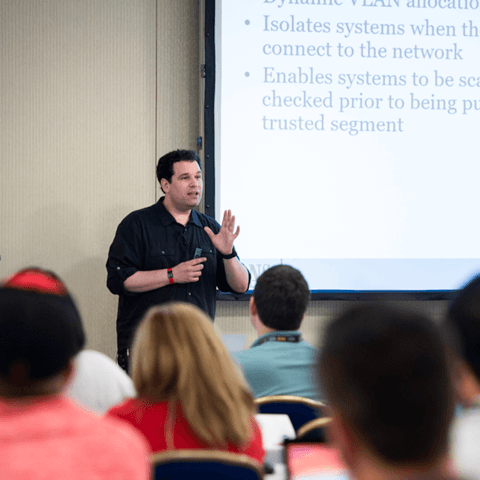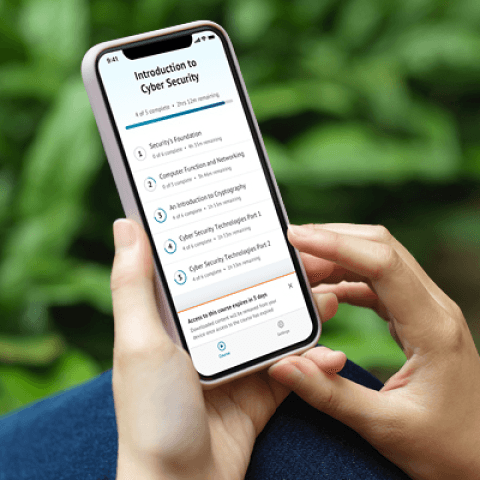SEC595: Applied Data Science and AI/Machine Learning for Cybersecurity Professionals


Experience SANS training through course previews.
Learn MoreLet us help.
Contact usBecome a member for instant access to our free resources.
Sign UpWe're here to help.
Contact Us
Apply your credits to renew your certifications
Attend a live, instructor-led class at a location near you or remotely, or train on your time over 4 months
Course material is geared for cyber security professionals with hands-on experience
Apply what you learn with hands-on exercises and labs
LDR521 turns decades of behavioral science into practical steps you can apply immediately, making security culture measurable, actionable, and sustainable through hands-on labs and tools.
This content is helping bring back concepts that get forgotten when you go from a doer to a senior leadership role. It brought back good concepts and a way to utilize them in the Security Context as well as getting leadership to think differently.
The SANS LDR521: Security Culture for Leaders course empowers cybersecurity leaders with the tools to build, measure, and institutionalize a strong cybersecurity culture across their organization. Through hands-on labs, real-world scenarios, and proven behavioral science frameworks, participants learn how to gain executive buy-in, engage the workforce, and integrate security into everyday business practices. This course is designed for experienced security professionals looking to drive meaningful cultural change and elevate the impact of their security programs.


Lance revolutionized cyber defense by founding the Honeynet Project. At SANS, he has empowered over 350 organizations worldwide to build resilient security cultures, transforming human risk management into a cornerstone of modern cybersecurity.
Read more about Lance SpitznerExplore the course syllabus below to view the full range of topics covered in LDR521: Security Culture for Leaders.
Learn the fundamentals of culture and how to decipher your organizational and security culture.
Define what you want your security culture to be and develop an actionable strategy on how to achieve it.
Discover how to effectively engage and motivate your workforce to prioritize cybersecurity. Learn marketing models, persona development, and incentive programs that drive behavioral change across the organization.
Learn how to overcome the "Curse of Knowledge" and make security simple for your entire workforce. Master proven models so your security initiatives and priorities align with and become embedded in people’s daily processes and activities.
Learn how to quantify your security culture and how the changes you are making support leadership’s strategic priorities. Sell your security initiatives and priorities in business terms that resonate with leadership.
Responsible for developing, planning, coordinating, and evaluating cybersecurity awareness, training, or education content, methods, and techniques based on instructional needs and requirements.
Explore learning pathResponsible for overseeing and directly managing technology projects. Ensures cybersecurity is built into projects to protect the organization’s critical infrastructure and assets, reduce risk, and meet organizational goals. Tracks and communicates project status and demonstrates project value to the organization.
Explore learning pathResponsible for managing the cybersecurity of a program, organization, system, or enclave.
Explore learning pathDaily focus is on the oversight of technical teams while aligning them to overall business strategies. Includes titles such as Technical Director, Information Security Officer, and CISO.
Explore learning pathResponsible for developing and conducting cybersecurity awareness, training, or education.
Explore learning pathAlign technology, business strategy, and people.
Explore learning pathThis role conducts supervises, manages and leads cybersecurity teams and work. Find the SANS courses that map to the Leadership SCyWF Work Role.
Explore learning pathThis role conducts leads cybersecurity teams and work. Develops cybersecurity human capital. Find the SANS courses that map to the Workforce Development SCyWF Work Role.
Explore learning pathWhen purchasing a live, instructor-led course, add 4 months of online access. View price in the info icons below.
Add 6 months of hands-on skills practice. Add to your cart when purchasing your course.
Entertaining and thought provoking and helped me understand what actions I can take to change the culture of my company.
I love the way each lab built on previous topics covered culminating in the last day where we could apply everything we learnt. Everytime we did a lab they were well explained and at no time did i feel rushed, or like we had too much time to complete them.

Get feedback from the world’s best cybersecurity experts and instructors

Choose how you want to learn - online, on demand, or at our live in-person training events

Get access to our range of industry-leading courses and resources